Scooters have come a long way since their invention in the 19th century.
In the 1960s, the scooter experienced a resurgence in popularity with the Vespa scooters manufactured by Piaggio and now, in the 21st century, electric scooters have become increasingly popular as a more eco-friendly and convenient mode of transportation.
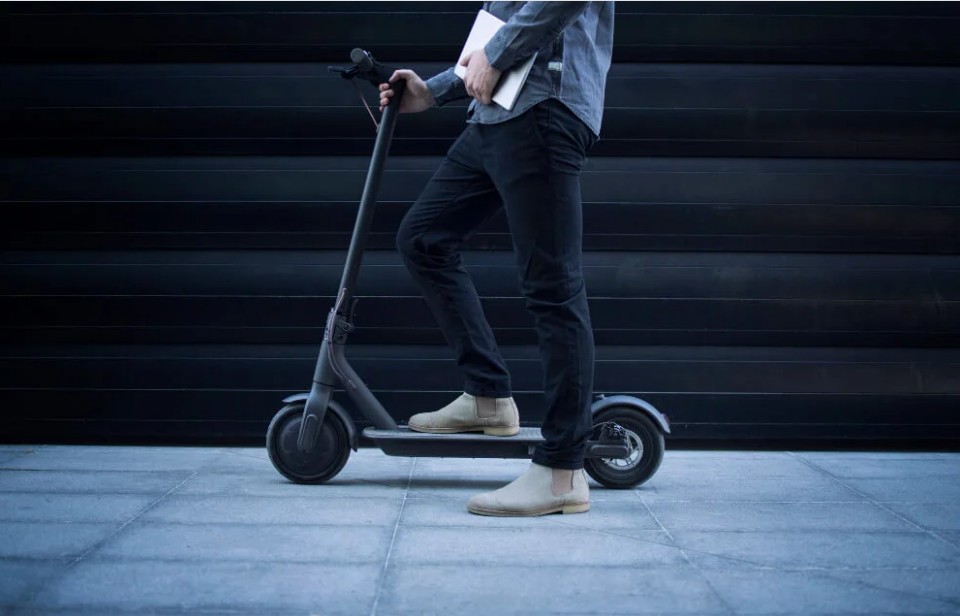
In this article, we will delve into the history of scooters, and the scooter boom and discover the individuals who have contributed to the evolution of this beloved mode of transportation.
Introduction: From foot-powered to electric
The evolution of scooters has been a gradual one, starting with foot-powered designs and eventually leading to the electric scooter of today.
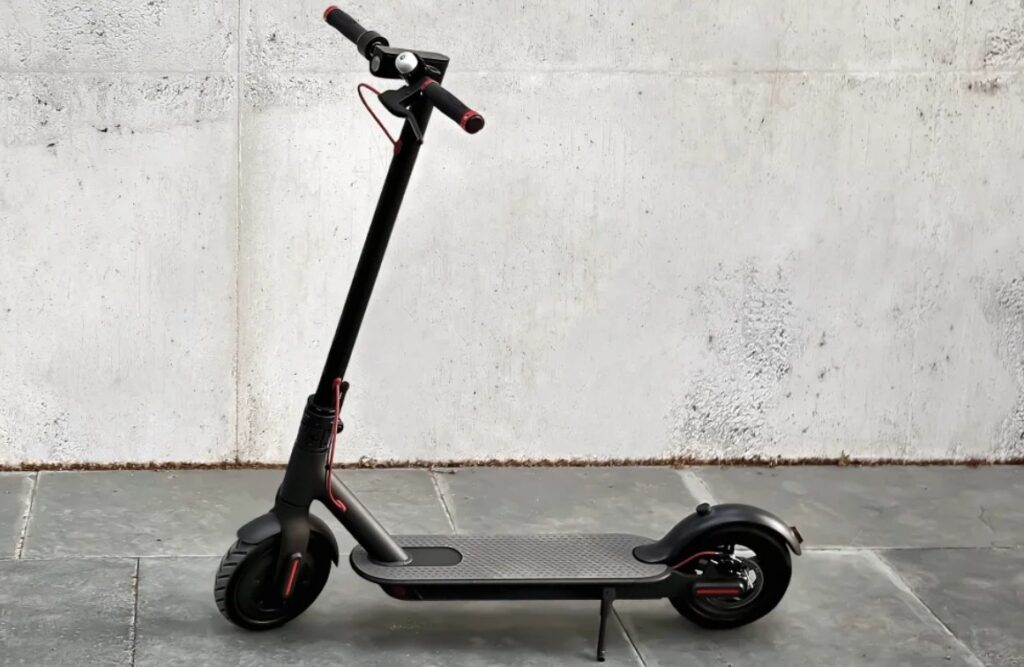
It wasn’t until the turn of the 20th century that the motor scooter began to take shape. In 1913, Autoped, the first motorized scooter, was introduced it was powered by a gasoline engine, and having an engine mounted on the swingarm of a scooter gives it more unsprung mass.
This design quickly caught on, and scooters began to gain popularity as a form of personal transportation.
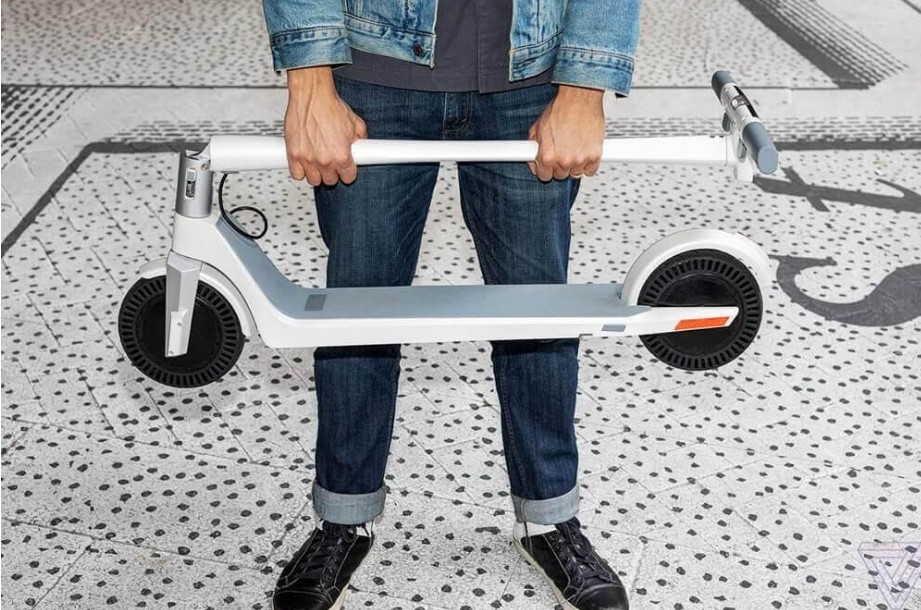
In the 1960s, the scooter experienced a resurgence in popularity with the Vespa scooter manufactured by Piaggio, at the same era motorized bikes were introduced. The Vespa was lightweight, easy to handle, and fuel-efficient, making it an ideal choice for city commuters.
However, with the advent of an electric scooter, this mode of transportation has taken a new turn. The electric scooter has become increasingly popular recently due to their eco-friendliness and ease of use.
The electric scooter has less maintenance, is more efficient, and emits no pollutants. The electric scooter is also more convenient, it can be charged at home and have a longer range than gas-powered scooters.
The first scooter-like device
Scooters were first invented in Germany in 1817 when Karl von Drais de Sauerbrun created a two-wheeled ride known as the “running machine” or “Laufmaschine” in German. This early version of the scooter was a wooden frame with two skate wheels and a handlebar for steering.
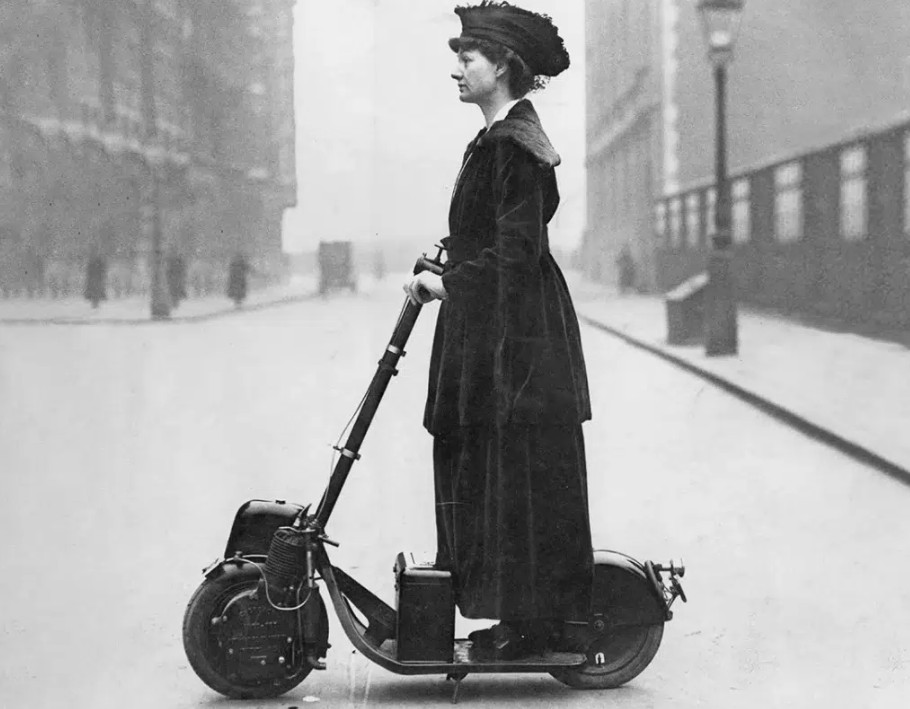
The rider would push themselves along with their feet, similar to how one would ride a traditional wooden kick scooter. This design allowed the rider to propel themselves forward using their muscle power, without the need for any external power source.
The Laufmaschine was designed as an alternative form of transportation for people who couldn’t afford horses. It was a popular mode of transportation during the 19th century, especially among the upper classes.
The wooden kick scooter had a simple yet effective design, it was lightweight and easy to operate. The rider would stand on the platform and use their feet to push themselves forward while holding on to the handlebar for steering. The two wheels were made of wood and were attached to the frame with iron axles.
The handlebar was also made of wood and was attached to the frame with iron brackets. The Laufmaschine was equipped with a brake system that allowed the rider to slow down or stop by applying pressure on the back wheel with the heel of their foot.
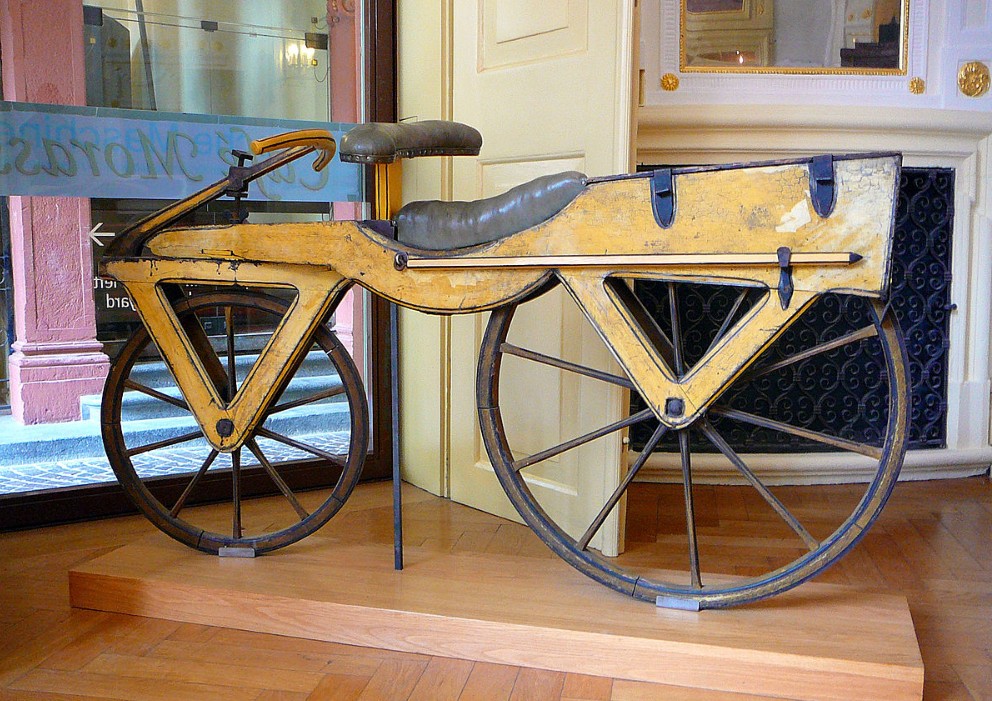
This invention marked the beginning of the scooter’s journey to becoming the popular mode of transportation it is today. The Laufmaschine inspired many other inventors and engineers to develop new designs and improve the functionality of the scooter.
Over time, the scooter evolved to include various features such as pedals, gears, and motors, which made it easier to ride and more efficient for transportation.
The evolution of the foldable scooter: from the Autoped to modern-day innovations
The Autoped, invented by Arthur Hugo Cecil Gibson and patented in 1916, was a revolutionary scooter at the time of its invention. It was the first motorized scooter and featured 10-inch tires, and a 4-stroke, 155cc engine on its front wheel, which could reportedly generate speeds up to 35mph.
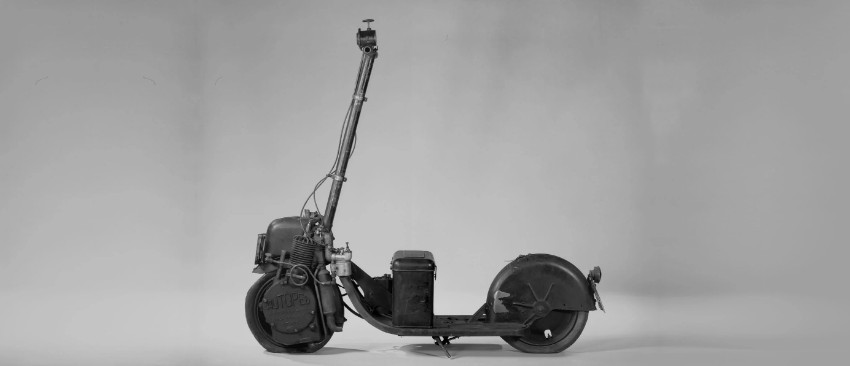
The steering rod of motorized scooters was collapsible for easy storage, making it a foldable scooter. This folding scooter made it a popular choice for people living in smaller houses, which was becoming more common during the industrial revolution.
The Autoped was known as the “motor vehicle of the millions” as it was an affordable option for almost everybody. Foldable design and affordability made the motor vehicle a popular choice among people looking for an alternative mode of transportation.
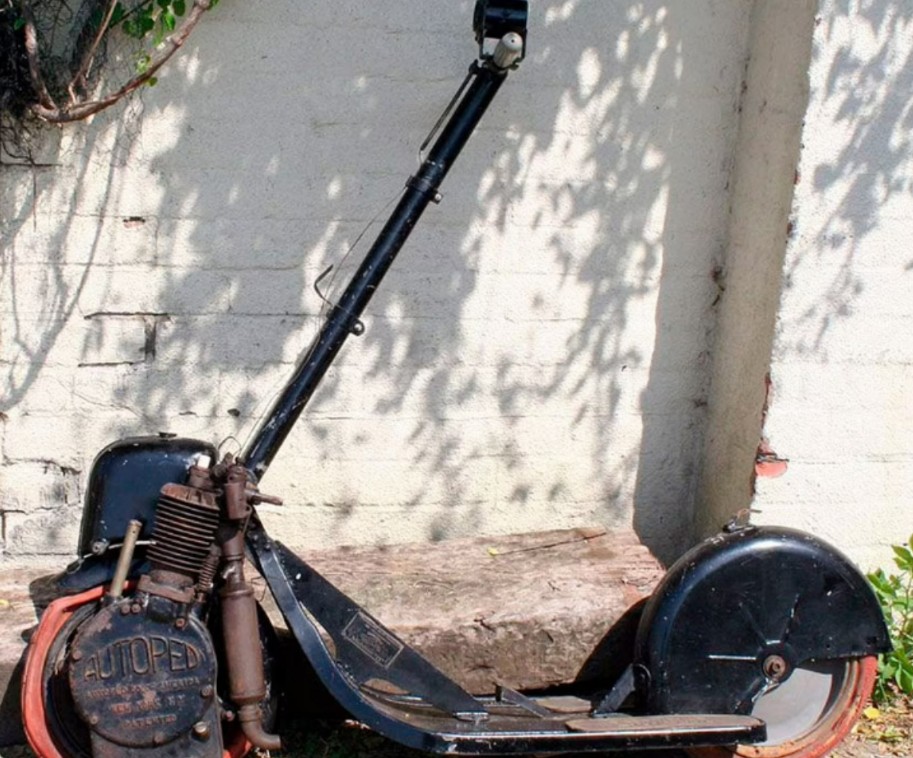
In addition to the regular Autoped, there was also an off-road version of the motorized scooter, known as an off-road scooter. An off-road scooter is fully capable of handling off-road terrain.
The motorized scooter is designed with larger wheels and thicker tires, which allows it to navigate through rough and uneven terrain. The off-road Autoped was a popular choice for people who wanted to take their scooter on outdoor adventures or for people who lived in rural areas.
Vespa’s resurgence: Piaggio’s impact on scooter popularity
The Vespa scooter, manufactured by Piaggio, is known for its impact on the resurgence of scooter popularity in the 1960s. The Vespa scooter was lightweight, easy to handle, and fuel-efficient, making it an ideal choice for city commuters. The Vespa scooter was also stylish and affordable, which made it appealing to a wide range of consumers.
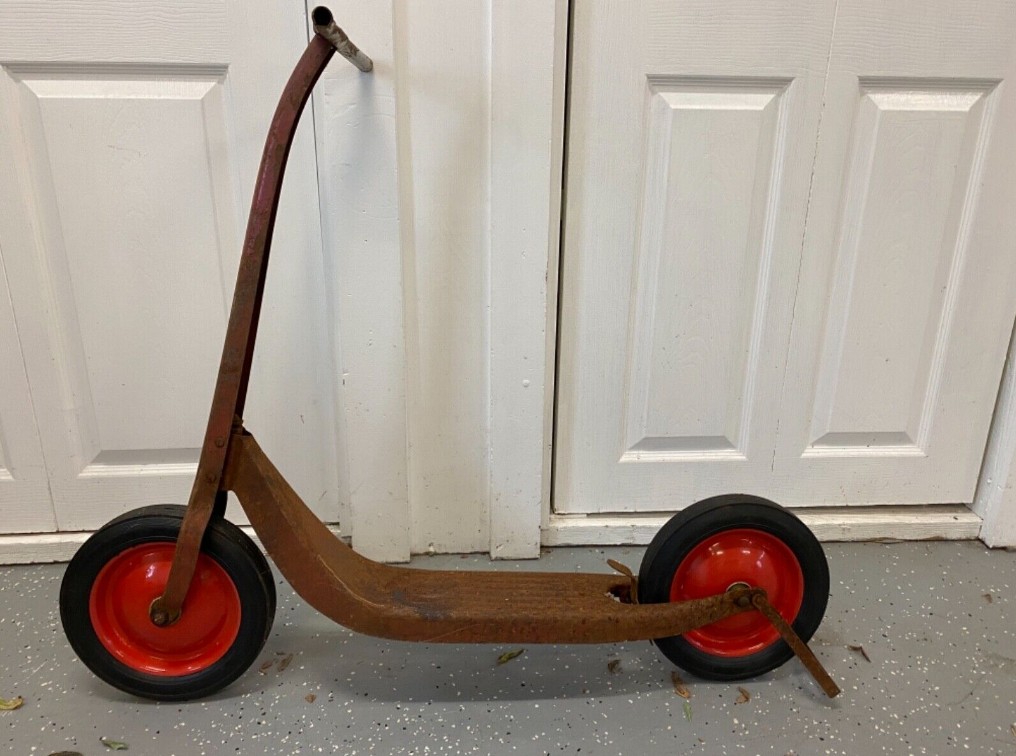
The Vespa scooter was first introduced in 1946, and quickly gained popularity in Italy, where it was manufactured. However, it wasn’t until the 1950s and 1960s that the Vespa scooter began to gain popularity in other parts of Europe and North America.
The Vespa scooter was able to appeal to a wide range of consumers, from students and young adults to older adults who were looking for a convenient mode of transportation.
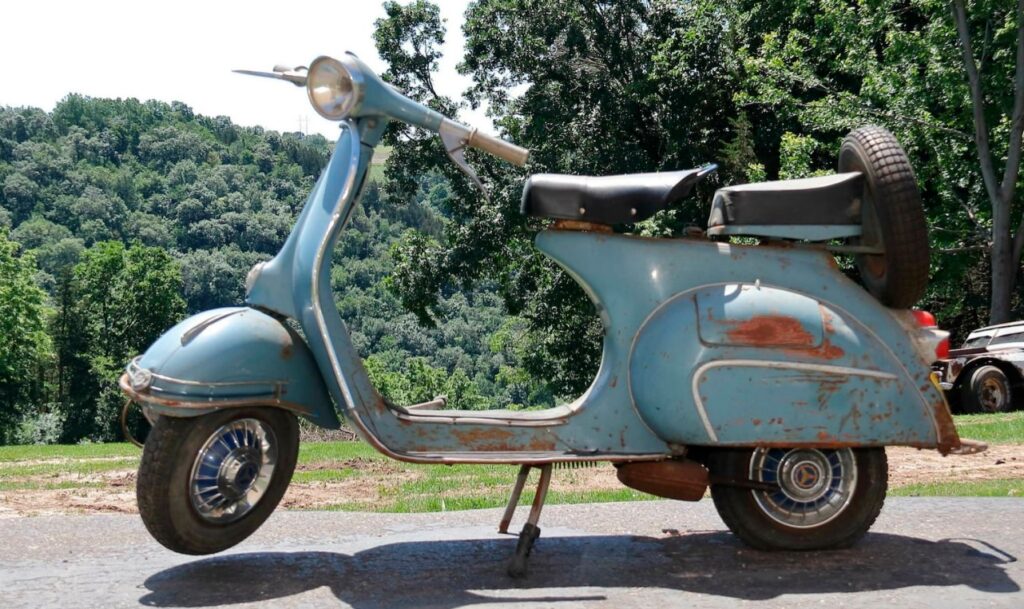
Piaggio’s Vespa scooter played a major role in the resurgence of scooter popularity in the 1960s. Vespa’s popularity also helped to increase awareness and acceptance of scooters as a form of personal transportation. This helped to pave the way for the development of new and improved scooter models in the years to come.
Electric scooter history: Modern scooters and their eco-friendly future
The 21st century has seen a rise in the popularity of electric kick scooters, which have become increasingly popular in recent years due to their eco-friendliness and ease of use.
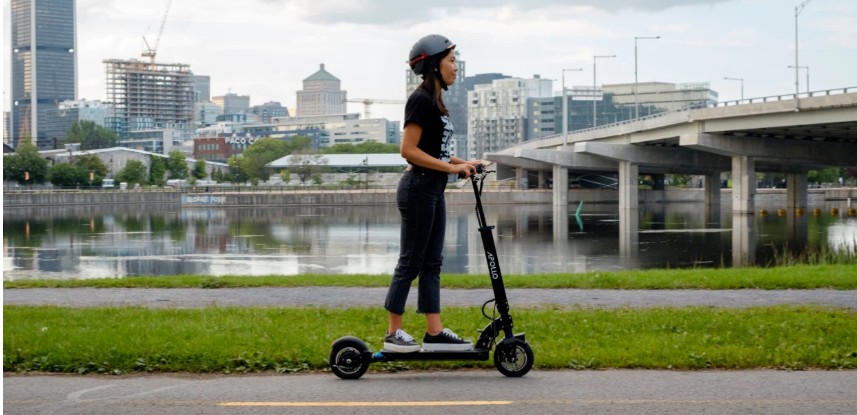
Lithium-ion battery technology is a key component of electric kick scooters. These batteries are rechargeable and have a high-energy density, which allows them to store a large amount of energy in a small package. This makes them a perfect fit for e-scooters, which need to be lightweight and portable while still providing enough power to travel long distances.
Electric scooters have less maintenance, they are more efficient, and they emit no pollutants, making them a more sustainable mode of transportation. They can be charged at home and have a longer range than gas-powered models.
The first production of a modern electric scooter begins in the early 2000s, but this was not until recent years that it has become widely available and popular.
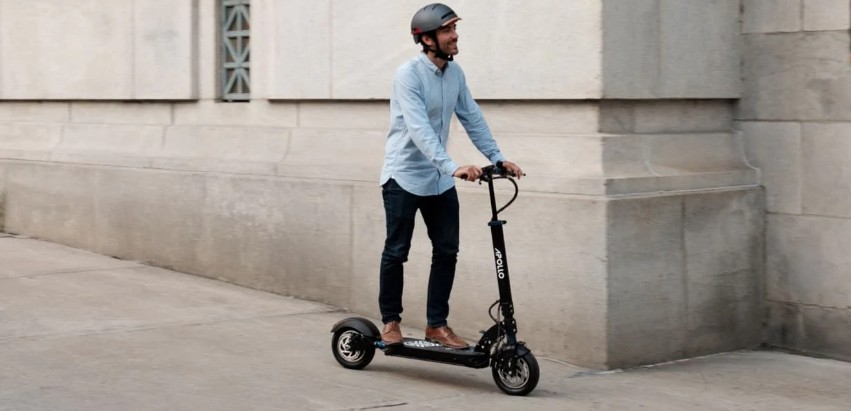
Technology has improved significantly and has made e-scooters more reliable and efficient. Now, e-scooters have a range of 30–60 miles per charge, and some of them can reach speeds of up to 50 miles per hour.
The electric age has also seen the development of new features such as GPS tracking, mobile app connectivity, and regenerative braking systems. These features have made e-scooters more user-friendly, convenient, and safer to use.
Furthermore, electric scooter is being used in urban areas and cities as a more sustainable alternative to cars and motorcycles, as it emits no pollutants and takes up less space on the road.
Who invented the electric scooter
Electric kick scooter, also known as e-scooter, has become a popular mode of transportation in cities around the world.
Electric scooters invented by several individuals and companies. However, it was not until the late 1990s and early 2000s that an electric scooter began to gain popularity.

One of the first companies behind the scooter revolution and mass-produced electric scooters was the American company, Currie Technologies. Currie Technologies introduced the first commercially available electric scooter, the “E-Zip” in 1997.
The E-Zip was a compact electric scooter that could be charged from a standard electrical outlet and had a top speed of 15mph and a range of 15 miles. This scooter was a major improvement over the previous models that were available at the time.
In addition, some other companies such as Segway, Gogoro, and Xiaomi have also been instrumental in the development and popularization of electric scooters.
These companies have developed an electric scooter that is more reliable, efficient, and convenient to use, with longer ranges and higher speeds.
How do electric scooters operate?
A modern electric scooter operates by using an electric motor to power the vehicle’s movement. The motor is powered by a rechargeable battery, which is charged by plugging the scooter into an electrical outlet. Once charged, the battery powers the motor, which propels the scooter forward.
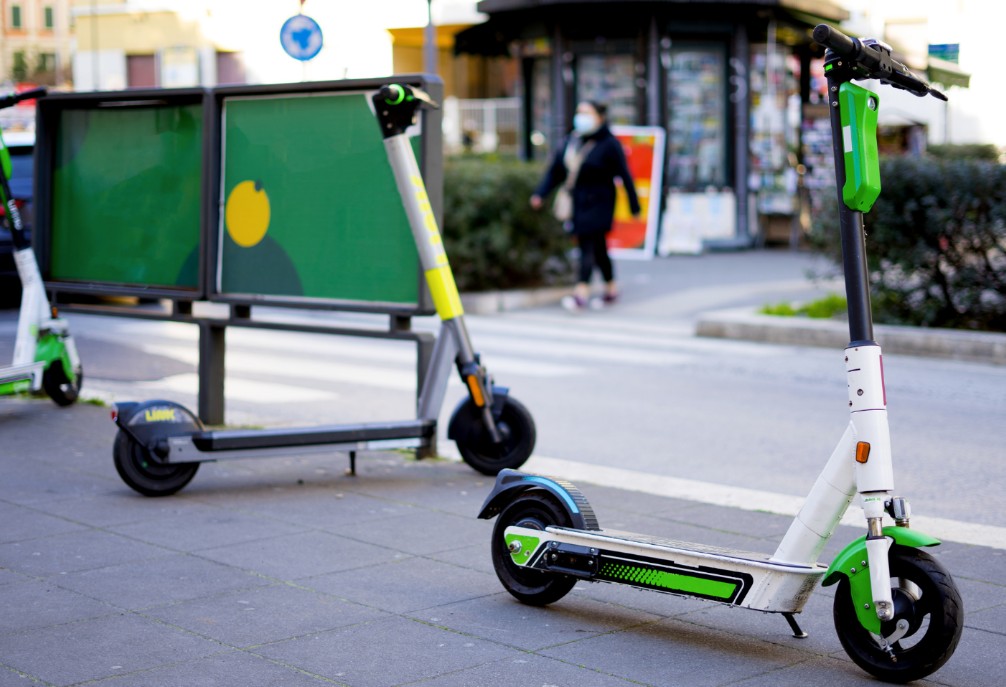
The electric motor is controlled by a throttle, which is typically located on the right handlebar. The rider controls the speed of the scooter by adjusting the throttle. Some electric scooters also have a brake lever on the left handlebar that is used to slow down or stop the scooter.
The modern electric scooter’s motor is connected to the rear wheel of the scooter via a drivetrain. This drivetrain can be a chain, belt, or direct drive, which transfers power from the motor to the wheel and propels the scooter forward.
The battery is typically located under the deck or in the stem of the scooter. The battery life depends on the type of battery, the size of the battery, and the usage of the scooter. A full charge will typically last for a certain number of miles, and the rider can check the battery level via a display on the scooter or through an app connected to the scooter.
Scooter culture: why scooters are popular?
Scooter history goes far as it was a popular mode of transportation for decades, but in recent years, scooter popularity has resurgent. This can be attributed to several factors, including convenience, affordability, and eco-friendliness.
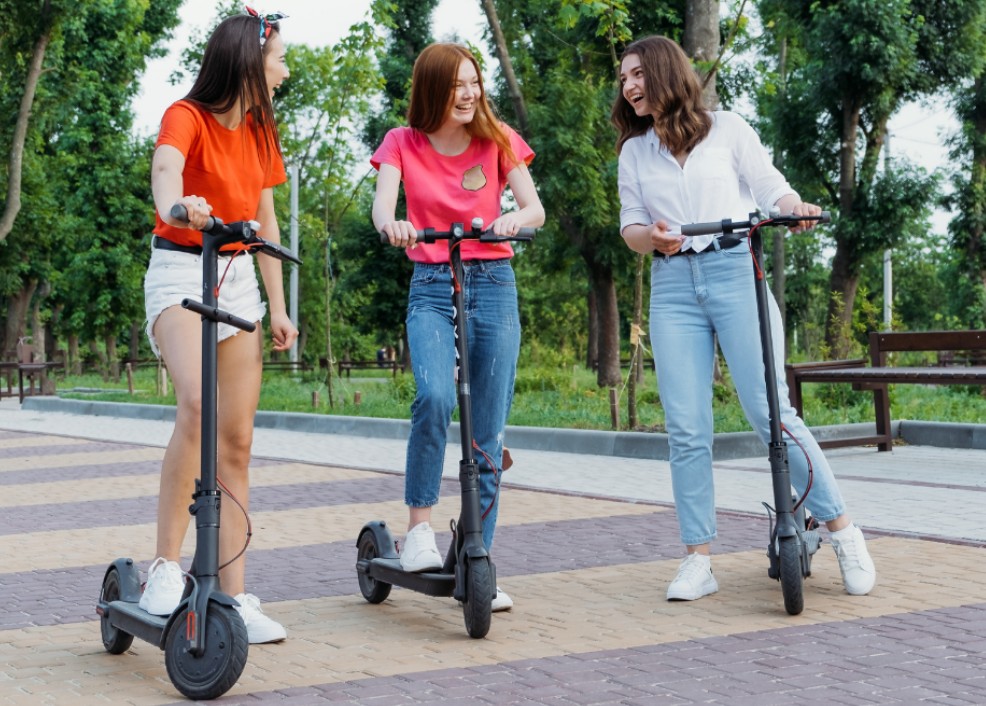
One of the main reasons for the motorized scooter boom is its convenience. Scooters are easy to maneuver, park, and store, making them a great option for city commuters. They are also more affordable than cars, making them a more accessible mode of transportation for many people.
Additionally, a scooter promised a smaller carbon footprint than cars, making them a more eco-friendly option.
Scooters have also become popular among younger generations, who view them as a stylish and trendy mode of transportation. The Vespa scooter, in particular, has become a cultural icon and a symbol of youth and freedom. The Vespa scooter is known for its sleek design and retro style, which has made it popular among young adults.
The modern electric scooter has also become popular for its role in the sharing economy. Many cities have adopted the use of shared electric scooters, making them accessible to everyone at a low cost. This has made scooters an attractive option for people who want to move around the city without owning a car.
The prospects of the scooter production
The prospects of scooter production are looking bright, with an increasing demand for more eco-friendly modes of transportation and electric vehicles, such as the electric bicycle or electric car, and advancements in technology.

The popularity of electric scooters has been on the rise in recent years, and this trend is expected to continue in the future. Electric scooters are more eco-friendly than scooters powered by gas, and they are also more efficient and convenient to use.
With the increasing demand for electric technologies, the industry is expected to continue to grow and evolve. Battery-powered bicycle, moped, or scooters are trending due to their features.
Companies are investing in research and development to improve the range and speed of electric scooters, as well as to make them more affordable and accessible to a wider range of consumers.
In addition, the industry is also expected to continue to innovate in terms of electric scooter design and features, such as GPS tracking, mobile app connectivity, and regenerative braking systems, which will revolutionize short trips.
Another trend in the scooter industry is the emergence of shared scooters, with many cities adopting the use of shared electric scooters, making them accessible to everyone at a low cost.
This trend has the potential to greatly increase the number of people using scooters and could make a modern electric scooter an even more popular mode of transportation.
Conclusion
In conclusion, scooters have been a popular mode of transportation for decades, but recently, their popularity has resurgent, and many people have their scooters.
If you wonder who invented the scooter, the invention of the electric scooter is attributed to multiple individuals and companies. But it was not until the late 1990s and early 2000s that electric scooters began to gain popularity.
The future prospects of scooter production are looking bright, with an increasing demand for more eco-friendly modes of transportation (electric mopeds or bicycles) and advancements in technology.
Electric scooters operate by using an electrical motor that is powered by a rechargeable battery, controlled by a throttle, and the rider can adjust the speed of the scooter.
Electric scooters also have a brake lever to stop the scooters, and the rider can check the battery level via a display on the scooters or through an app connected to the scooters.
The popularity of electric scooters is expected to continue to grow, and the industry is expected to continue to evolve with advancements in technology and design, as well as the emergence of shared scooters.
FAQ
Who was the inventor of scooter?
Karl von Drais de Sauerbrun designed the first scooter in Germany in 1817.
Where was the scooter invented?
The scooter was invented in Germany.
What was the first scooter invented?
The first scooter was a two-wheeled wooden desk by Karl von Drais de Sauerbrun.
Who is the first scooter in the world?
Innovator Arthur Hugo Cecil Gibson created the Autoped, the first motorized scooter for grownups, in 1913 and patented it in 1916.
If you need to read about how to lock electric scooter, please read our article.






